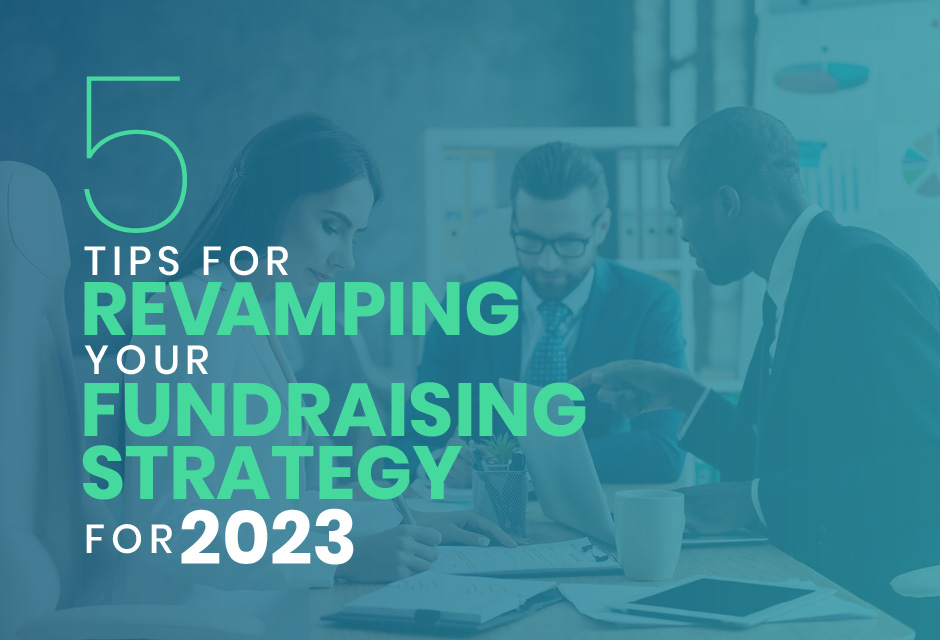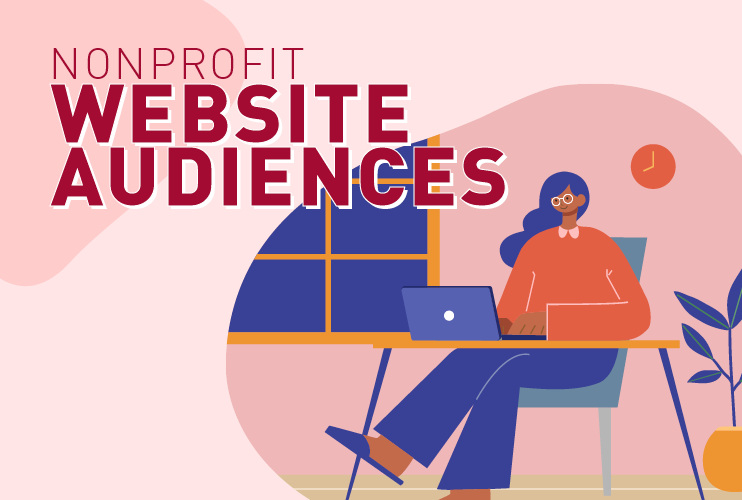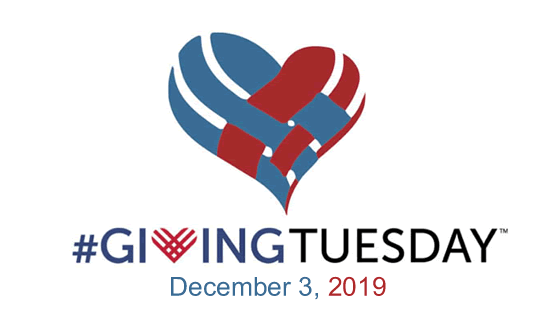School pride is a unique loyalty unmatched by other motivations of support. People take pride in their schools by cheering on their athletic teams, making family traditions out of attending ...
5 Tips for Revamping Your Fundraising Strategy for 2023
With New Year’s resolutions fresh on everyone’s minds, it’s time to revitalize your fundraising to maximize your organization’s potential over the coming months and beyond.
Your calendar may be completely ...
A Guide to Identifying Audiences for Your Nonprofit’s Website
Having an engaging, informative website is also important when you consider that those who encounter your nonprofit through other channels will likely visit your website to find out more. While emails, direct mail, social media, flyers, and word-of-mouth marketing are all effective for spreading awareness, you can only fit so much information into each piece of content you create for these channels. On your website, though, the possibilities are endless.
To get the most out of your nonprofit’s website, you’ll need to design it for your target audience. But that target audience is likely more complex than you’d initially think. In this guide, we’ll answer key questions about identifying and tailoring content for your website’s audience, including:
- What groups of people are included in your website audience?
- How do you learn more about your audience?
- How do you design your website with your audience in mind?
Every nonprofit has different needs and goals, so you’ll want to evaluate the suggestions in this article to determine which ones will be most effective for you. Then, use those strategies to design your website with your audience in mind. If you need help getting started or have questions along the way, you can always reach out to a nonprofit web design agency to collaborate on all your audience-related needs.
What groups of people are included in your audience?
Most brands focus on promoting their products or services primarily to consumers. Nonprofits differ from these other brands in that they have to sell and promote their mission instead of a product or service. They also need to address many more groups of people in order to make an impact.
Some of the potential groups visiting your nonprofit’s website for information about your organization include (but are not limited to):
=&0=&
The Essential Guide to Alumni Giving and Fundraising
Keeping this in mind, this guide will review the current state of alumni giving, the best practices for engaging your alums, and the most effective ways to increase your alumni giving rates. We’ll also review the tools that make it easier to reach your fundraising goals. Here’s what to expect:
- Why is Alumni Giving Important?
- Exploring Alumni Giving Rates and Trends
- How Can Prospect Research Help Find Top Alumni Donors?
- Alumni Giving Best Practices
- 6 Helpful Alumni Giving Tools
As we walk through these steps, you’ll likely find yourself exploring the quantitative and qualitative information you have on your alums. Before making any programmatic decisions, however, plan to conduct an audit of your alumni database, remove outdated and duplicate information, and enhance your data with additional wealth and philanthropic indicators. Then, you can be confident that any changes you make will be based on the most accurate, thorough data possible.
Why Is Alumni Giving Important?
Alumni giving is important for two primary reasons: it offers crucial support to the important work your university does in educating the leaders of tomorrow and it’s a key indicator of your university’s financial health. In this section, we’ll cover how alumni donations tend to be directed and used by universities, plus the major benefits of developing an alumni giving program.
How Are Alumni Donations Used?
There isn’t just one type of student that graduates from your school. Likewise, you don’t have only one type of alum. Your graduates have gone on to be biologists and writers, farmers and professional athletes. In many cases, alums will direct their donations to a specific program or department that was meaningful to them during their studies. In fact, restricted gifts make up 93% of giving to universities.
Overall, alumni giving generally funds:
- Scholarships. If an alum received a specific scholarship or support during their time at your university, they’ll often want to “pass on” this opportunity to current and future students.
- Construction costs. Usually, alumni interest in funding construction projects piques after the kickoff period of a capital campaign to fund a specific project, such as a new science center with up-to-date technology or a state-of-the-art theater. Alums are particularly apt to give to buildings for which the name (e.g. the Alumni Hall) will acknowledge their contribution.
- Research projects. Funding faculty research can be attractive to your alumni, especially when it’s framed in the context of its impact on students and the broader community.
- Operational costs. While the day-to-day operations of running a university aren’t as sexy as new experimental research, they are just as important! Because of this, operational costs generally end up being funded by unrestricted donations.
By engaging the diversity of your alumni community, you’ll be able to attract and direct resources across your funding priorities.
What Are the Benefits of a Strong Alumni Giving Program?
Even though the majority of alumni gifts contain restrictions, they are still incredibly valuable to your university. So why exactly is it important to build a strong alumni giving program? A thriving program allows you to:
Access a broad range of support that adds up to make a big impact. Relying entirely on one income source can become a big problem if you suddenly lose that stream. Alumni giving helps you avoid that risk by diversifying your fundraising efforts across a large body of donors. Moreover, small gifts can really add up. For example, in a given year, an annual fund made up of $500,000 in small donations can have the same financial effect as
...
Don’t Fall Short – Maximize Your #GivingTuesday 2019 Campaign
When #GivingTuesday was founded in 2012 by the 92nd Street Y, the UN Foundation, and numerous partners, the goal was to “create a massive wave of generosity that lasted well beyond that day alone and touch every person on the planet”. According to Blackbaud, the nonprofit software company, $10 million moved through its platform during the first #GivingTuesday in 2012, marking a 90% increase from the previous year. Seven years later, #GivingTuesday 2018 raised $400 million online in the United States alone, a 45% jump from 2017. #GivingTuesday will take place on December 3, 2019, this year and is expected to have even greater success than prior years.
If your organization is looking to maximize your #GivingTuesday campaign this year for support from the masses, read on for a handful of tips and tricks on where to focus your marketing strategy. These will not only help your organization elevate your #GivingTuesday campaign, but will keep the momentum rolling all year long.
Set & Share Your Intentions
Before #GivingTuesday arrives, take some time, think about goals with your team, write them down, and share them. It is important to help your donors visualize how you’ll use their donations. Maybe your university is raising money to refurbish an older building on campus. This is a great opportunity to share a rendering of the project and highlight the needs of your organization to help increase your chance of a donation.
Use Multiple Platforms
While #GivingTuesday is primarily shared on social media, don’t be afraid to go a different route and use more than just social media platforms. This is where your newsletter and email marketing campaigns come in. In fact, MailChimp found that the average open rate for nonprofit email marketing is 25.96%, compared to the universal email open rate of 6%. What better day to take advantage of this fact than #GivingTuesday?
Match Gifts
Now that #GivingTuesday has become a global movement, it’s a great opportunity to find other sponsors and donors who want to match gifts. Consider local banks and businesses, or even members of your own board who are searching for a way to make a larger impact on their contributions for #GivingTuesday.
Get Social
Find all your social media gurus and tell them to do what they do best – share, post, like, tweet, and retweet all about your organization’s #GivingTuesday campaign initiatives. Schedule contests, post photos, and form partnerships to educate people about your organization’s intentions for the day.
Follow Up
After #GivingTuesday has come and gone and you’ve crushed your goals, it’s time to share the good news and thank your donors and supporters. Share an effective infographic to show the total money raised, total number of gifts, total number of donors, and the average gift size to keep the momentum going!
For assistance maximizing your #GivingTuesday campaign, contact the fundraising experts at AlumniFinder!





